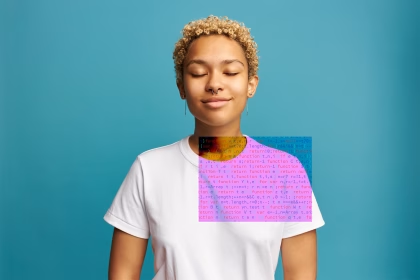As we step into the new year, we continue our annual tradition of reflecting on the impactful research facilitated by iMotions. In a world where human insights is paramount, our continued collaboration with clients across the world in diverse fields ranging from neuromarketing to healthcare has given rise to a wealth of knowledge.
We hope to not only provide a strong software for analysis but also to foster a community of researchers and innovators who utilize our tools to explore the multifaceted dimensions of the human experience. Our clients contribute to a rich tapestry of publications that continues to redefine the landscape of research.
The versatility of iMotions becomes apparent as we witness the increasing popularity of multimodal studies, a testament to our capability in unraveling intricate layers of human behavior and cognition.
iMotions stands at the intersection of technology and exploration, empowering researchers to delve into the complexities of the human mind and behavior. As we unveil our selection of the top 5 publications from the past year, they each show not just the capabilities of our software but the collective efforts of a community dedicated to advancing knowledge.

Using Eye Tracking to Reveal Responses to the Built Environment and Its Constituents
Hernan J. Rosas, Ann Sussman, Abigail C. Sekely, Alexandros A. Lavdas
Webster University, The Human Architecture and Planning Institute, Inc., The University of Maryland, Eurac Research
Urban designers play a crucial role in shaping the physical, social, and environmental aspects of our communities- working to create cities that are not only practical and attractive but also attuned to the requirements of the varied populations they cater to. The integration of biometric tools in their research, such as eye-tracking and facial expression analysis, introduces a scientific approach to studying human responses to a built environment.
This article provides urban designers with insights into the biological underpinnings of design preferences, encouraging a more thoughtful and evidence-based approach to creating urban spaces that are not only visually appealing but also supportive of community well-being. The findings underscore the importance of detailed and visually complex elements in the built environment and suggest that designs incorporating natural materials and fractal geometry may contribute to anchoring individuals to a space, fostering a sense of place and community well-being.
Understanding Learning Engagement with User-Centered Human-Computer Interaction in a Multimodal Online Learning Environment
Jiahui Ma, Elizabeth A. Johnson, Bernadette McCrory
Since the COVID-19 Pandemic, there has been a need to understand the role and impact of online learning environments. This groundbreaking publication looks into understanding multimodal learning analytics with a multitude of biosensors, including Galvanic Skin Response (GSR/EDA), eye tracking, and facial expression analysis to enhance the understanding of engagement in a multimodal online learning environment.
The study reveals real-time cognitive, emotional, and visual learning engagement across different interaction types and thus providing valuable insights for refining human-computer interaction (HCI) design in online education.
Unsold is unseen … or is it? Examining the role of peripheral vision in the consumer choice process using eye-tracking methodology
Erik Wästlund, Poja Shams, Tobias Otterbring
Aarhus University, Karlstad University
This article explores the role of peripheral vision in the consumer choice process, challenging the notion that “unseen is unsold” in visual marketing. The groundbreaking study disrupts traditional thinking and utilizes cutting-edge eye-tracking technology to delve into the pivotal role of peripheral vision during the consumer choice process.
By conducting controlled experiments in the lab and a real-world supermarket setting, the findings hold value in consumer marketing as they unveil the nuanced ways in which visual attention, particularly through peripheral vision, shapes product preferences and choice behavior.
EEG-Based Neural Synchrony Predicts Evaluative Engagement with Music Videos
Nikki Leeuwis, Tom Van Bommel
Tilburg University, Unravel Research
This study contributes to the emerging field of neuro-forecasting by demonstrating that neural synchrony, measured through EEG, serves as a significant predictor of active engagement on YouTube, including likes, dislikes, and comments for music tracks released more than two years earlier.
In the world of neuromarketing, this research sheds light on the increasing relevance of neural synchrony as a valuable tool for predicting not only the consumption but also the responses of an audience to entertainment content. The broader implications of this type of research can even be expanded across various fields including consumer behavior, neuromarketing, health-related choices, and financial decision-making.
Design and assessment of an experimental model for evaluating the effectiveness of audiovisual products on the circular economy aimed at promoting environmental awareness
Juan Romero-Luis, Alejandro Carbonell-Alcocer, Valeria Levratto, Manuel Gertrudix, María Del Carmen Gertrudis Casado, Alexandra Hernandez-Remedios
There is a collective understanding that investing in and empowering our youth is crucial for building a better, more sustainable future for society. In the context of the climate crisis, one of the major challenges is motivating young individuals to adopt sustainable behaviors.
This research designed an experimental model to evaluate the effectiveness of audiovisual products relating to ecological transition and circular economy for young people. By using eye-tracking and facial expression analysis, researchers address the importance of effective communication strategies to raise environmental awareness and promote sustainable habits. The study contributes to the ongoing discourse on effective communication strategies for promoting sustainable behavior among youth, acknowledging the challenges of bridging the attitude-behavior gap in environmental awareness.












